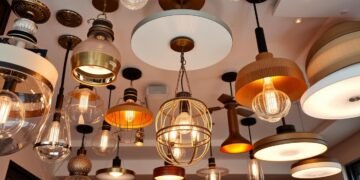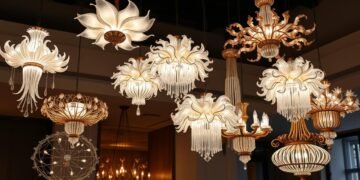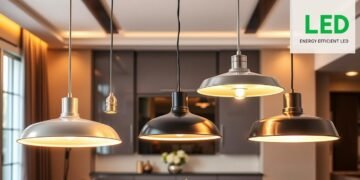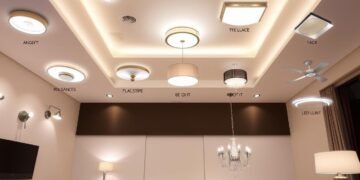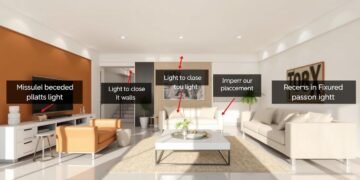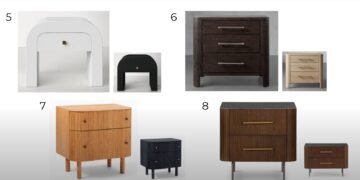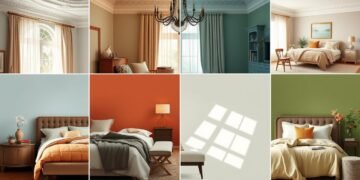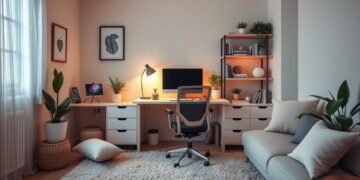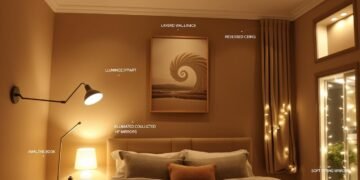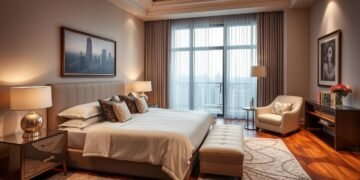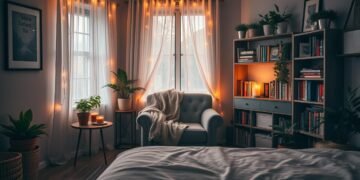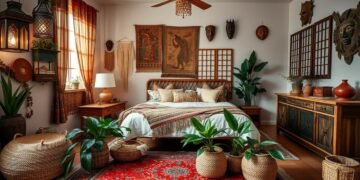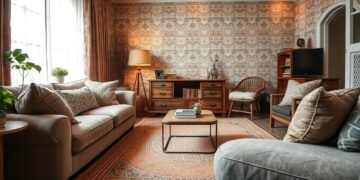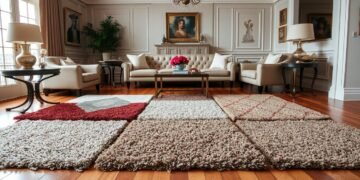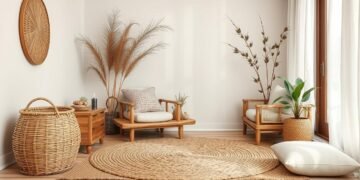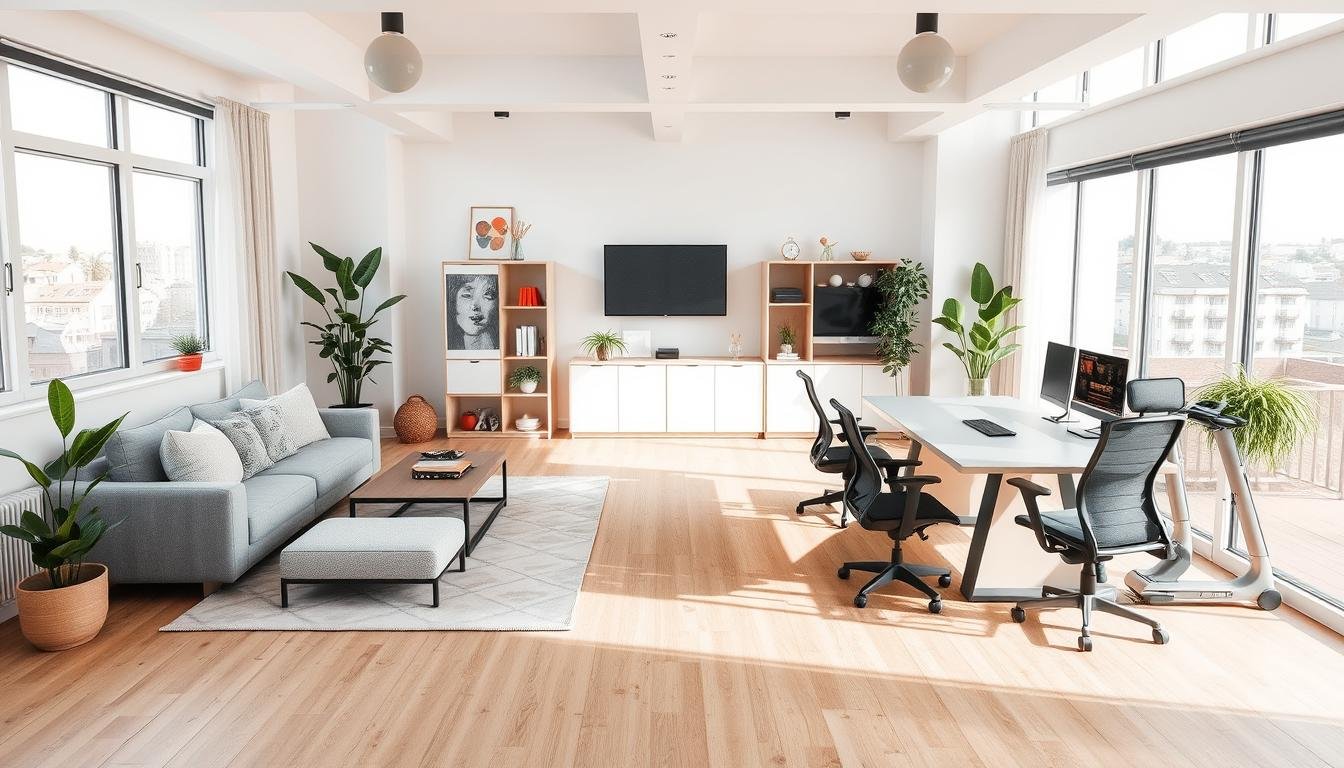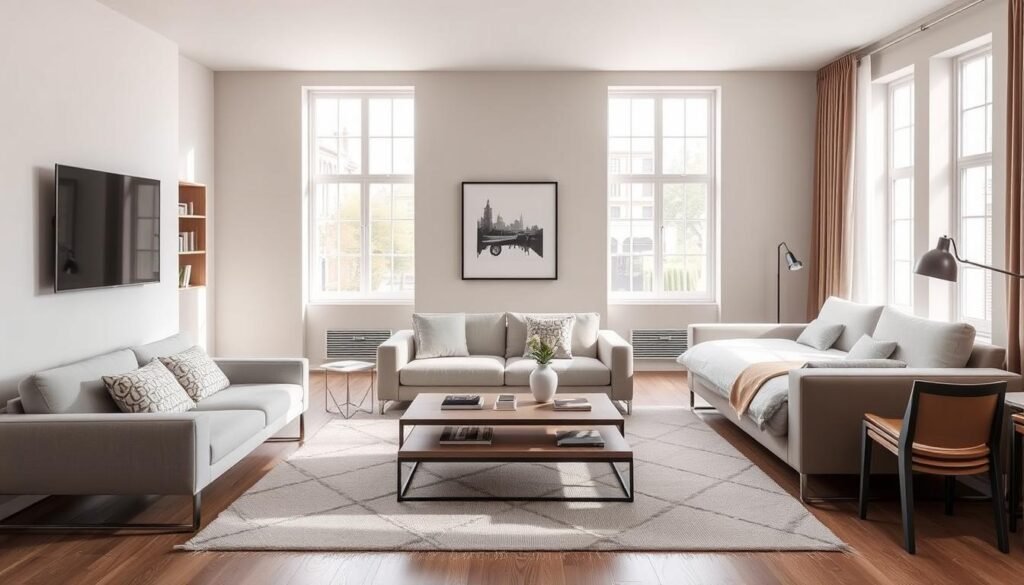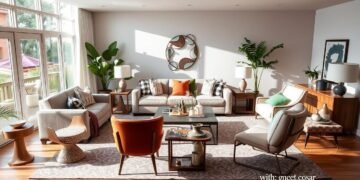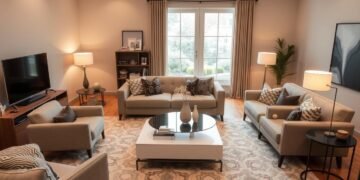In 2020, the pandemic changed how we live, making multi-purpose rooms very important. These rooms are now the center of our homes, used for work, family time, and more. Learning how to design these rooms well is essential to make the most of your space.
Jessica, a young professional, bought her first home and wanted a stylish, functional living area. She turned her open-concept room into a multi-purpose space. By arranging furniture smartly and adding flexible design, she made zones for work, rest, and fun. Her room now looks great and meets her changing needs.
Jessica’s story shows how powerful good design can be. In this article, we’ll share five strategies to make your shared spaces more versatile and useful. Get ready to make the most of your space and create a multi-purpose haven.
Table of Contents
- 1 Understanding the Evolution of Multi-Purpose Spaces
- 1.1 The Rise of Flexible Living
- 1.2 Relatedarticles
- 1.3 8 Tips for Balancing Symmetry and Asymmetry in Your Furniture Layouts
- 1.4 6 Virtual Tools & Apps to Perfect Your Layout Before You Buy
- 1.5 7 Common Furniture Arrangement Mistakes and How to Avoid Them
- 1.6 Modern Demands on Living Spaces
- 1.7 Benefits of Multi-Functional Rooms
- 2 Essential Planning Before Creating Multi-Purpose Spaces
- 3 Multi-Purpose Room Layout Strategies
- 4 Selecting Versatile Furniture for Shared Spaces
- 5 Smart Storage Solutions for Maximum Functionality
- 6 Lighting Design for Different Activities
- 7 Color Schemes and Design Elements
- 8 Space-Saving Solutions for Small Areas
- 9 Creating Distinct Zones Without Walls
- 10 Technology Integration in Multi-Purpose Rooms
- 11 Conclusion
- 12 FAQ
- 12.1 What are the key layout strategies for creating effective multi-purpose rooms?
- 12.2 How have multi-purpose spaces evolved to meet modern living demands?
- 12.3 What are the benefits of designing multi-functional rooms?
- 12.4 How can you effectively plan for a multi-purpose space?
- 12.5 What types of furniture work best in multi-purpose rooms?
- 12.6 How can you incorporate smart storage solutions in multi-purpose spaces?
- 12.7 What lighting design strategies are effective for multi-purpose rooms?
- 12.8 How can you create distinct zones without physical barriers in a multi-purpose room?
- 12.9 How can technology enhance the functionality of multi-purpose spaces?
Key Takeaways
- Multi-purpose rooms need creative layouts to be both useful and stylish.
- Smart furniture arrangement and flexible design are key to creating different areas in one space.
- Using centralized meeting room systems can cut down on work and keep things consistent everywhere1.
- Being clear about meeting room bookings can avoid arguments over who booked what1.
- Having a clear booking plan helps keep things the same and reduces employee conflicts1.
Understanding the Evolution of Multi-Purpose Spaces
The way we use our living spaces has changed a lot. Now, multi-purpose rooms are a must-have for many. They help us make the most of our small spaces2. These rooms can be offices, guest rooms, or play areas, fitting our busy lives perfectly.
The Rise of Flexible Living
More people work from home, and we need spaces for learning and fun. Our homes must change with our families. So, multi-purpose rooms are key, making our homes more useful and adaptable3.
Modern Demands on Living Spaces
Our homes are getting smaller, but we need them to be more flexible. Multi-purpose rooms are the answer2. They come in various sizes, fitting different needs and lifestyles.
Benefits of Multi-Functional Rooms
Multi-purpose rooms offer many advantages. They help us use our space better, making our homes more functional3. They also let us change our spaces as our needs change, making them perfect for today’s living.
“The versatility of multi-purpose rooms empowers us to create living spaces that truly reflect our evolving lifestyles and priorities.”
Essential Planning Before Creating Multi-Purpose Spaces
Before turning a room into a multi-purpose space, think about your family’s needs now and in the future. Set a budget and plan your tasks carefully for a successful project. Imagine how you’ll use the room and find creative ways to add extra functions4.
Good planning is essential for a multi-purpose space that works well and looks good. Use space-planning tools and technology to get insights that help you decide4. Adding smart building tech can save energy, improve security, and show how the space is used. This leads to better savings and efficiency4.
Interior designers in Snowmass focus on making each area work well for your needs5. They use smart lighting, the right furniture, and flexible walls to make spaces that can change as you do5.
| Strategies for Effective Space Planning | Benefits |
|---|---|
| Incorporate smart building technologies | Improved energy efficiency, enhanced security, and data-driven insights to optimize space utilization |
| Leverage space-planning tools and software | Visualize designs, optimize layouts, and improve client communication |
| Employ room zoning techniques | Define distinct areas for different activities and enhance the overall functionality of the space |
| Select appropriately scaled furniture and fixtures | Avoid overwhelming the space or impeding movement, ensuring a harmonious and efficient layout |
With careful planning and the right tools, you can make a space that’s both functional and stylish45.
Multi-Purpose Room Layout Strategies
Creating a multi-purpose room layout needs careful thought. You must use the space well and divide it into zones. This way, you can balance function and beauty6.
Zone Creation Techniques
To design a multi-purpose room, divide it into zones for different activities. Use furniture, rugs, or paint to mark these areas6. Try different furniture angles for a fresh look. Make sure there’s private space in the design6.
Traffic Flow Optimization
It’s key to make the room’s traffic flow smooth. Place furniture to allow easy movement between zones. This respects the room’s layout and size6. Good circulation makes the room practical and balanced6.
Activity-Based Space Planning
Design your room with specific activities in mind. Use furniture that does more than one thing, like sofa beds or storage benches7. Add decor that means something to you, like photos or plants, to make the space welcoming7.
Using these strategies, you can make your multi-purpose room both useful and beautiful. It will adapt to your changing life and needs. Make the most of your space with careful planning and design6.
When designing a multi-purpose room, choosing the right furniture is key. Transformable furniture, compact furniture, modular furniture, and multifunctional furniture are essential for shared spaces8.
For a light and open look, pick furniture with thin lines. Items that do more than one thing, like a daybed or storage ottoman, are great for saving space8. Modular furniture that can change layout is also smart for flexible living8.
Good space planning is vital for a multi-purpose room. It ensures the right furniture fits well and uses space wisely8. Knowing how the space will be used helps pick the right items8.
| Furniture Type | Characteristics | Benefits |
|---|---|---|
| Transformable Furniture | Pieces that can be easily modified or reconfigured to serve multiple purposes | Adaptable to changing needs, maximizes limited space |
| Compact Furniture | Furniture with a small footprint, designed for efficient space utilization | Suitable for small or shared spaces, creates an uncluttered appearance |
| Modular Furniture | Furniture systems that can be rearranged or combined in various ways | Allows for flexible and customizable layouts, accommodates evolving needs |
| Multifunctional Furniture | Furniture pieces that serve more than one purpose | Maximizes functionality in limited spaces, reduces the need for multiple items |
Choosing the right furniture makes a multi-purpose space work well for different needs9. Think about balance and harmony to make the space look good9.
“The key to a successful multi-purpose room is finding the right balance between functionality and aesthetics.”
Smart Storage Solutions for Maximum Functionality
In today’s homes, keeping things organized and functional is key. Luckily, smart storage solutions can turn your multi-purpose rooms into tidy, efficient spaces10.
Hidden Storage Options
Furniture with built-in storage, like beds with drawers or ottomans with secret spots, keeps your stuff hidden. This way, your space looks clean and clutter-free11. Also, using cabinets and shelves wisely can add lots of hidden storage without ruining your style.
Vertical Space Utilization
If you don’t have much floor space, use the walls and ceiling for storage. Tall shelves and wall-mounted systems make the most of vertical space. They keep things within reach while saving floor area11.
Modular Storage Systems
Modular storage, like closet organizers and versatile furniture, lets you adjust storage to fit your needs. These systems grow with you, keeping your rooms organized and efficient11.
By using these smart storage ideas, you can make your multi-purpose areas into neat, useful, and beautiful spaces. They’ll meet your lifestyle and needs perfectly1011.
| Storage Solution | Key Benefits |
|---|---|
| Built-in Furniture Storage | Discreet, clutter-free storage within furniture pieces |
| Vertical Storage Systems | Maximizes unused wall and ceiling space for organization |
| Modular Storage Solutions | Customizable and adaptable to changing storage needs |
“Effective storage solutions are the foundation of a well-organized, multifunctional living space.”
Lighting Design for Different Activities
Creating the right lighting is key for a room that does it all. It must fit many activities and moods. A mix of lighting techniques, lighting versatility, and lighting adaptability is needed12.
Start with ambient lighting for a warm, welcoming feel. LED bulbs are great because they save energy and last long12. Use bulbs with a color temperature of about 2700 kelvins for a cozy vibe12.
Add task lighting for specific areas. Use recessed lighting with LED cans for adjustable colors. Place them over desks, craft tables, or reading spots12. Dimmers help change the light for different tasks, from work to chill time12.
Then, add accent lighting to show off special features or add drama. Think about wall sconces, pendant lights, or outdoor lights like string lights and candles12.
Layering these lights makes your space versatile and easy to change. Smart home tech, like Amazon Echo Plus, adds convenience and control12.
| Lighting Type | Purpose | Recommended Features |
|---|---|---|
| Ambient Lighting | Provide overall illumination and set the mood | |
| Task Lighting | Illuminate specific work or activity areas | |
| Accent Lighting | Highlight architectural features and create drama |
|
With smart lighting planning, your space can be both useful and beautiful. It will meet many needs and moods13.
Color Schemes and Design Elements
Creating a cohesive multi-purpose space needs careful planning. Start with a neutral base palette to set the room’s tone14. Use the three-color rule: dominant colors for 60%, secondary for 30%, and accents for 10%14. This balance makes the space look good and feel right.
Neutral Base Palettes
Neutral colors like white, beige, gray, and taupe are great for multi-purpose rooms15. They make small spaces look bigger and fit many design styles15. These colors also let you add bold colors or patterns without too much.
Accent Colors for Zone Definition
To mark different zones in a multi-purpose room, use accent colors wisely1415. Accent hues, about 10% of the scheme, highlight areas or focal points1415. This helps keep the room’s look balanced and clear.
Add decor like artwork or family photos to make the space warm and personal16. Stick to 3 to 5 colors to keep things interesting and unified16. Mood boards, color apps, and online tools help pick colors that match your style and the room’s use.
“Color has the power to set the mood, influence our emotions, and enhance the overall aesthetic of a space. Thoughtfully incorporating color schemes and design elements can transform a multi-purpose room into a visually captivating and highly functional environment.”
Space-Saving Solutions for Small Areas
Designing small multi-purpose rooms means focusing on space efficiency. Using furniture that folds or hides away helps keep things tidy17. Tall shelves or wall storage also make the most of your space17.
Choosing furniture that does more than one thing is smart for small spaces17. An ottoman can be a coffee table and a seat, saving room17. Adding texture and warmth makes small rooms cozy17. Light colors also make a room feel bigger and brighter17.
Make the most of every corner in your small room17. A kitchen corner with built-in seating adds charm and function17. Daybeds are great for living rooms, and window treatments can make rooms feel larger by adding outdoor views17.
- Small rooms with architectural focal points can disrupt the flow, making the eye focus on that area17.
- Larger mirrors with decorative frames can make small rooms feel deeper, adding to the sense of space17.
- Too many accessories in a small room can overwhelm it. A few well-placed items can add sophistication17.
- Area rugs can help define zones in larger spaces in small homes17.
| Space-Saving Solutions | Benefits |
|---|---|
| Furniture that can be folded or tucked away | Creates a clutter-free, organized environment |
| Tall shelving units or wall-mounted storage | Enhances the functionality of limited square footage |
| Multi-functional furniture pieces | Reduces the need for bulky standalone items |
| Utilizing nooks and crannies | Adds charm and functionality to small homes |
| Daybeds in living rooms | Serve as versatile anchors for small spaces |
| Window treatments | Visually enlarge small rooms by incorporating outdoor views |
By using these space-saving ideas, you can turn small multi-purpose rooms into beautiful, functional, and organized spaces1718.
Creating Distinct Zones Without Walls
In today’s homes, open floor plans are very popular. They offer a smooth, flowing living area. But, making different zones in these open spaces can be tricky. Luckily, there are smart ways to divide areas without walls19.
Room Divider Strategies
Using furniture as a divider is a clever idea. Placing chairs, sofas, or bookcases in a way can separate areas. For example, it can divide the living room from the dining area19. Area rugs are also great for defining spaces. They can anchor a conversation group or mark a specific area19.
Visual Separation Techniques
For a room that feels open yet divided, try using paint or wallpaper. Different colors or patterns on walls can make spaces look separate. This way, you can keep the room’s flow without walls19. Lighting can also help separate areas. Choosing lights that vary in style or size can mark different zones19.
With these creative ideas, you can make a living space that’s both open and organized. It balances being open with having clear zones1920.
Technology Integration in Multi-Purpose Rooms
Smart design and technology integration can turn multi-purpose rooms into useful and flexible spaces. Add wireless charging stations, hidden outlets, and cable management to keep things tidy21. Smart home devices can adjust lighting, temperature, or sound easily, making your space perfect for work, parties, or family time.
Place display monitors around the room for better visibility and teamwork21. Use easy-to-use controls to manage your tech, keeping your space comfortable and efficient21.
Improve sound quality with top-notch microphones and speakers for everyone, whether they’re there in person or joining remotely21. Make sure the room is accessible by mounting controls at wheelchair-friendly heights21.
Lighting is key for mood and atmosphere in a multi-purpose room. Use smart lights like adjustable strips or bulbs to set the right mood for any activity21. Always try to use natural light to keep things healthy and productive.
With smart technology, your multi-purpose room can become a versatile and efficient center for all your needs21. Let technology integration help you make the most of your space, from smart design to home office and more21.
“The integration of technology in multi-purpose rooms is key for a truly flexible room design that meets your changing needs.”
Conclusion
Multi-purpose rooms are great for making the most of your space. They offer a smart way to use every inch of your home. By using smart layout ideas, you can turn your living area into something that works for many different activities.
Choosing the right furniture and design elements is key. This way, your room can look good and work well for different things. Adding personal touches and the right lighting can make your space even more inviting.
Keep your multi-purpose room tidy and organized. This helps it stay useful and attractive. By following the ideas of multi-functional design, you can make a space that fits your life perfectly.
